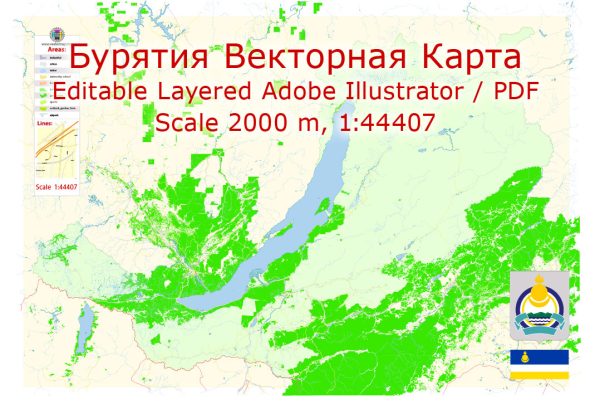Buryatia, a federal subject of Russia, is located in the Siberian region of the country, near the eastern shore of Lake Baikal. The history of urban development in Buryatia is closely tied to the region’s indigenous Buryat people and the broader history of Russian expansion into Siberia. Here’s a brief overview of the history of urban development in Buryatia:
- Pre-Russian Period:
- Prior to Russian colonization, the Buryat people were semi-nomadic herders and hunters, living in traditional felt yurts and practicing Buddhism and shamanism.
- Russian Exploration and Conquest:
- The first Russian explorers and Cossacks began arriving in the region in the 17th century, seeking to expand their territory and control over Siberia.
- The Russian government established the Transbaikal Cossack Host in the 17th century, and this marked the beginning of formal Russian control in the area.
- In 1689, the Treaty of Nerchinsk established the border between Russia and the Qing Dynasty, which had an impact on the region’s development.
- Founding of Urban Centers:
- The city of Verkhneudinsk, now known as Ulan-Ude, was founded in 1666 and became an important administrative center in Buryatia.
- The city of Chita, situated to the west of Buryatia, also played a significant role in the region’s development.
- Imperial Russian and Soviet Period:
- Buryatia, like other regions in Siberia, experienced significant Russian colonization, with the establishment of towns and administrative centers.
- During the Soviet era, Buryatia was transformed through industrialization and the promotion of collectivization and agricultural development.
- Ulan-Ude became the capital of the Buryat Autonomous Soviet Socialist Republic in 1923.
- Post-Soviet Era:
- With the dissolution of the Soviet Union in 1991, Buryatia became a federal subject of Russia.
- The region has continued to develop economically, with a focus on industries such as agriculture, mining, and tourism.
- Modern Urban Development:
- Ulan-Ude, as the capital of Buryatia, has seen significant urban development and infrastructure improvements in recent years.
- The city is known for its unique architectural features, including the world’s largest Lenin head sculpture, which reflects the region’s Soviet history.
Buryatia’s history of urban development is intertwined with the broader historical context of Siberian colonization and the impact of Russian imperial and Soviet policies. Today, the region continues to evolve as it faces economic, social, and environmental challenges while preserving its cultural heritage and natural beauty.


 Author: Kirill Shrayber, Ph.D.
Author: Kirill Shrayber, Ph.D.